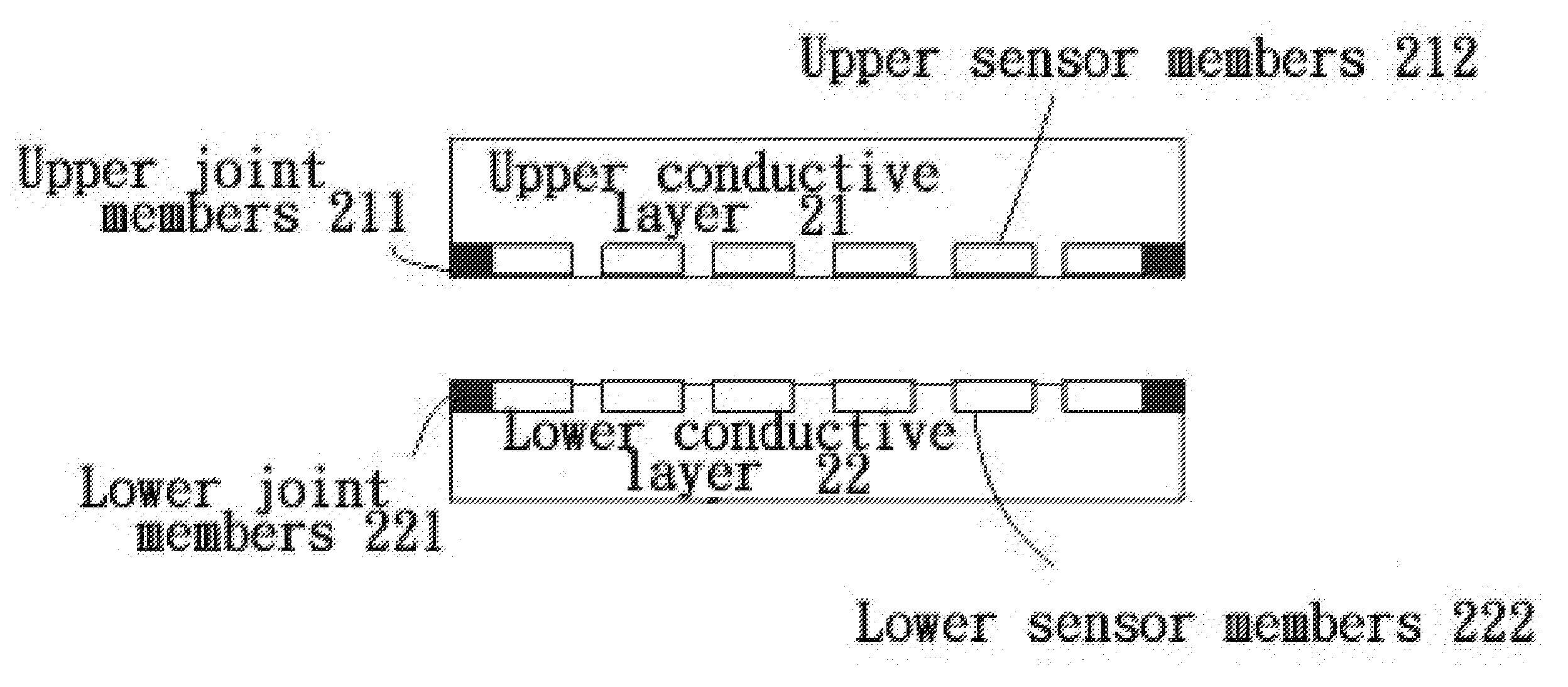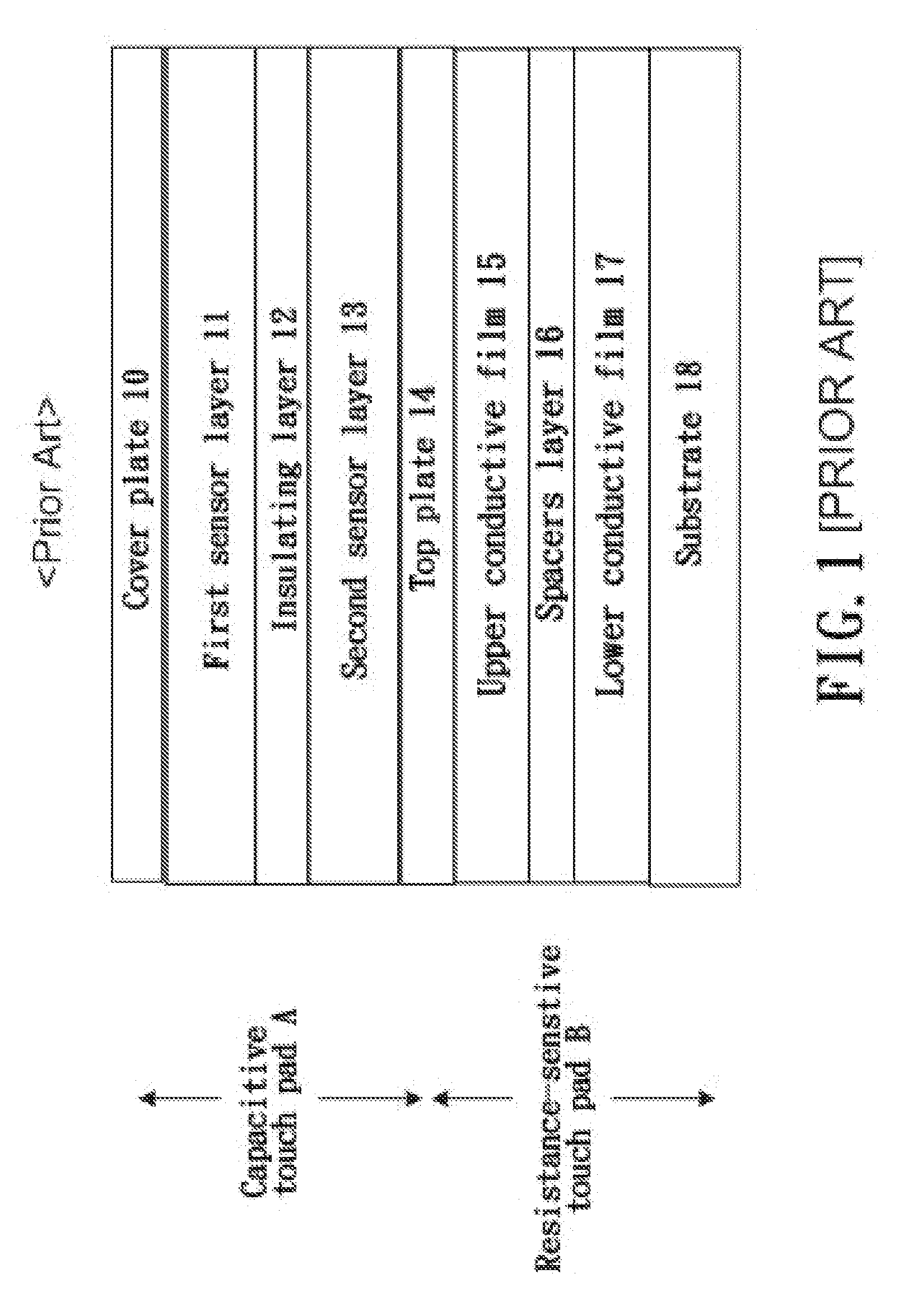Touch pad for multiple sensing
a technology touch pads, applied in the field of touch pads, can solve the problems of more complex control circuit chips, more complex manufacturing processes of capacitive touch pads, and high cost of resistance-sensitive touch pads
- Summary
- Abstract
- Description
- Claims
- Application Information
AI Technical Summary
Benefits of technology
Problems solved by technology
Method used
Image
Examples
first embodiment
[0039]the present invention is shown in FIG. 2A. The embodiment comprises: an upper conductive layer 21 and a lower conductive layer 22. The surface of the upper conductive layer 21 includes a plurality of upper sensor members 212 disposed in the middle and a plurality of upper joint members 211 disposed on the edge. The surface of the lower conductive layer 22 also includes a plurality of lower sensor members 222 disposed in the middle and a plurality of lower joint members 221 disposed on the edge. The upper conductive layer 21 is disposed relative to the lower conductive layer 22 by a distance, such that the surfaces of the upper sensor members 212 and the lower sensor members 222 are disposed opposite each other. The distance is relative to the areas, thicknesses and material structures of the upper sensor members and the lower sensor members, as well as dielectric of the space between the upper conductive layer and the lower conductive layer.
[0040]The upper conductive layer 21 ...
second embodiment
[0048]the present invention is as shown in FIG. 2B, which comprises an upper conductive layer 21, a conducting layer 23 and a lower conductive layer 22. The surface of the upper conductive layer 21 includes a plurality of upper sensor members 21 in the middle and a plurality of upper joint members 211 on the edge. The surface of the conducting layer 23 includes a plurality of conductive bridges 231 in the middle, and the conductive bridges are disposed on the surface between any two of the upper sensor members 212 to enable the electrical conduction between any two of the upper sensor members 212. The surface of the lower conductive layer 22 has a conductive film 223 and a plurality of lower joint members 221. The upper conductive members 21 are disposed relative to the lower conductive members 22 at a distance, such that the surfaces of the upper sensor members 212 and the lower sensor members 222 and the conductive bridges 231 are disposed oppositely. The distance is relative to t...
PUM
 Login to View More
Login to View More Abstract
Description
Claims
Application Information
 Login to View More
Login to View More - R&D
- Intellectual Property
- Life Sciences
- Materials
- Tech Scout
- Unparalleled Data Quality
- Higher Quality Content
- 60% Fewer Hallucinations
Browse by: Latest US Patents, China's latest patents, Technical Efficacy Thesaurus, Application Domain, Technology Topic, Popular Technical Reports.
© 2025 PatSnap. All rights reserved.Legal|Privacy policy|Modern Slavery Act Transparency Statement|Sitemap|About US| Contact US: help@patsnap.com



